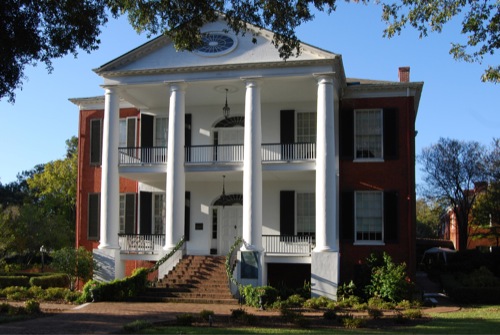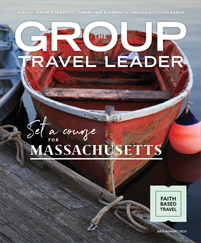
Courtesy Rosalie Mansion
Rosalie Mansion
Natchez, Mississippi
Few southern Plantations made it through the Civil War unscathed. One of the most unique to survive intact is the Rosalie Mansion. Sitting high on a bluff overlooking the Mississippi River, the location was strategic enough to become a headquarters of the Union army.
Gen. Walter Gresham, who was in charge of the Union forces in Natchez, took over the home but made an agreement to take all of the furnishings into the attic for safekeeping. Those furnishings, including 21 pieces of rare Belter furniture, made it through the war and are still displayed in the home.
“Natchez was a showplace for homes and families. Working plantations would have been in Louisiana, but in Natchez, it was all about the social settings,” said James Jennings, manager at the Rosalie Mansion. “Before the Civil War, Natchez had more millionaires per capita than anywhere else in the United States, so it all about money, wealth and show.”
A docent-guided tour through the interior of the house shows opulence firsthand. Groups can learn about the history of the house and the families that lived there. Although the home was built in the Federal style, Andrew Wilson, the second owner of the home, redecorated the first floor in the Victorian style.
In 1823, the original owner, Peter Little, built on the historic land, which was a part of Fort Rosalie and right on the river. The unique placement overlooking the levy on the Mississippi makes it the only antebellum home on the river in this area of Natchez and one worthy of a group visit.
Atalaya
Murrells Inlet, South Carolina
Even in the early 20th century, people migrated south to avoid cold Northern winters. Anna Hyatt Huntington, one of the best-recognized sculptors of her time, suffered from tuberculosis, which was more severe in cold weather, so she and her husband, Archer, constructed their Moorish-style home Atalaya on the beach at what is now Huntington Beach State Park.
“People frequently confuse it for a Civil War prison because of the ironwork on the windows, but they were actually designed by Huntington herself,” said Mike Walker, naturalist at Atalaya.
The unusual design was the product of Archer Huntington, who was a scholar of Spanish culture and modeled Atalaya after Moorish castles he saw while traveling along the Spanish coast.
The 200-by-200-foot structure took two years to build, in part because it took on a philanthropic element. It was constructed during the Great Depression and was the main source of employment in the area, so Huntington took his time, used his imagination and built without plans.
“If he had an idea, he would convey it verbally,” said Walker. “Sometimes he liked it, sometimes he didn’t, and they’d tear it down and try again.”
Just across the street from the park, Brookgreen Gardens is a sculpture garden and wildlife preserve that houses 1,444 pieces of sculpture, many created by Huntington.











